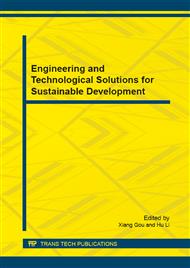p.436
p.442
p.446
p.450
p.455
p.462
p.469
p.474
p.478
Characteristics and Origin of Loess Landslides on Loess Terraces at Heifangtai, Gansu Province, China
Abstract:
Over-irrigation can induce serious landslides on the slopes of loess terraces. Typical examples are the series of landslides that happened in the last few decades on the Forth Terraces of the Yellow River at Heifangtai, Yongjing County, Gansu Province. Agricultural irrigations began on the Heifangtai terraces in 1960s. Due to the specific geological and geomorphological conditions of the thick loess terraces, a great amount of irrigation water infiltrated into the loess causing serious landslide problems. The landslides at the Heifangtai can be classified into two different types based on their composition: loess landslides and loess-bedrock landslides, characterized by high-speed, long-distance sliding and low-speed, short-distance sliding respectively. Landslides caused by over-irrigation have a special phenomenon of hysteresis development following long-term of irrigation, occurring in groups and with high frequency. Most of the landslides happen in rainy seasons and freeze-thaw periods.
Info:
Periodical:
Pages:
455-461
Citation:
Online since:
November 2014
Authors:
Keywords:
Price:
Сopyright:
© 2014 Trans Tech Publications Ltd. All Rights Reserved
Share:
Citation:


